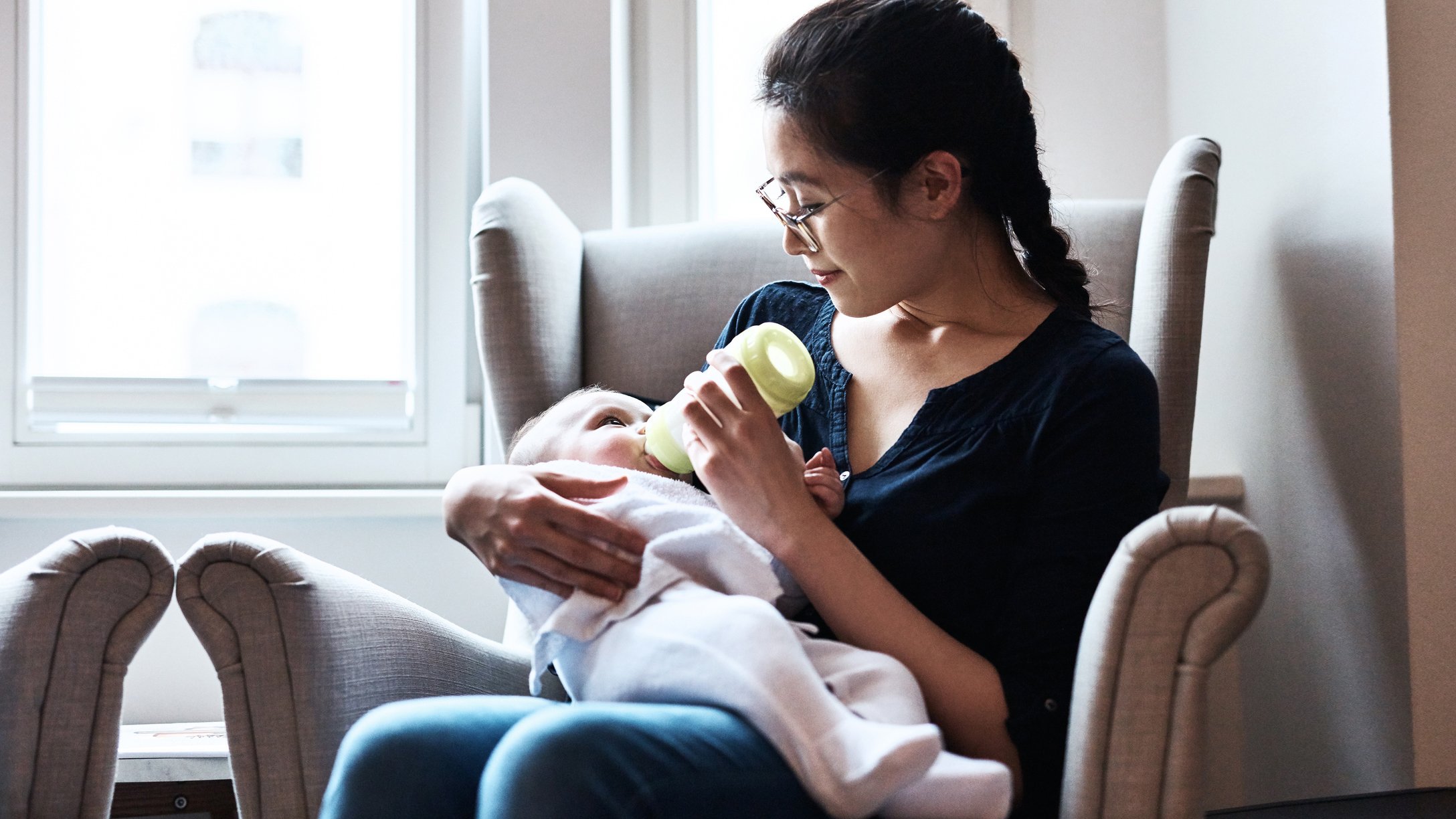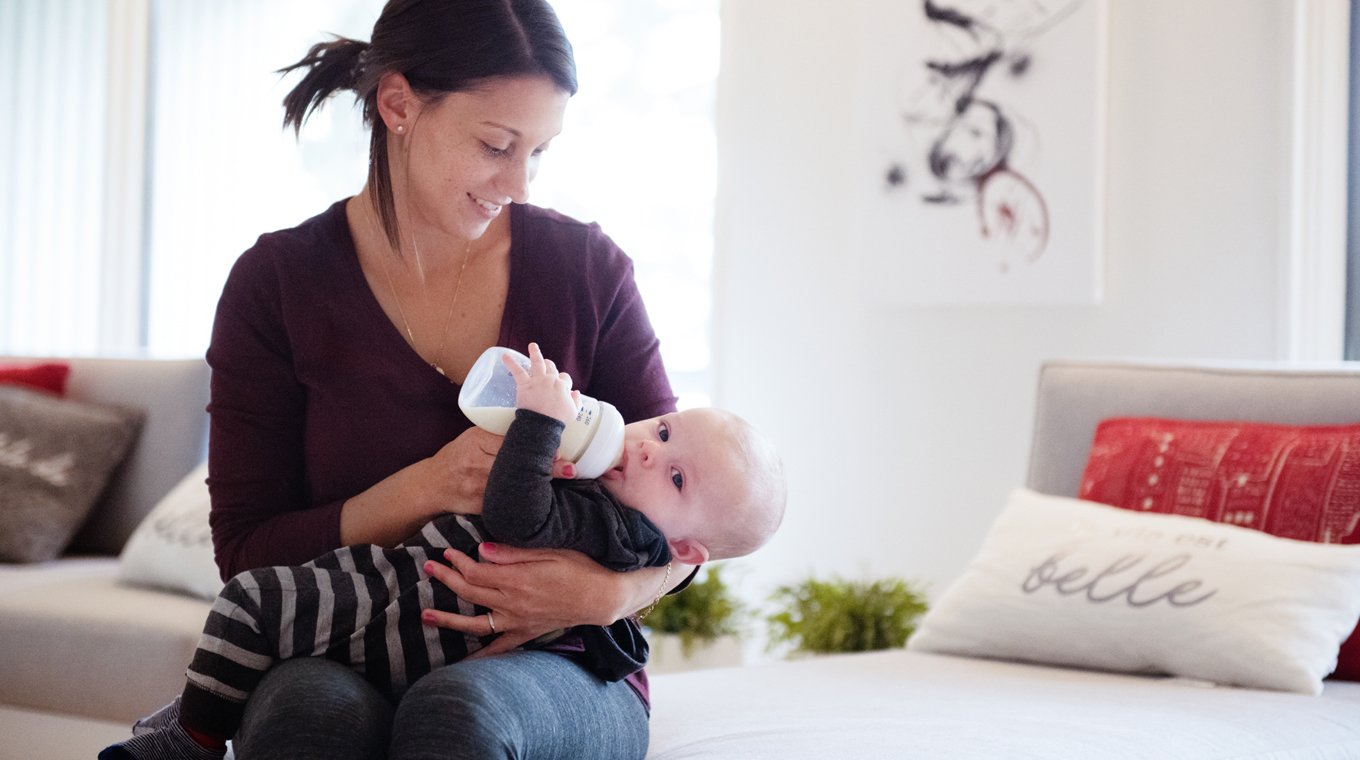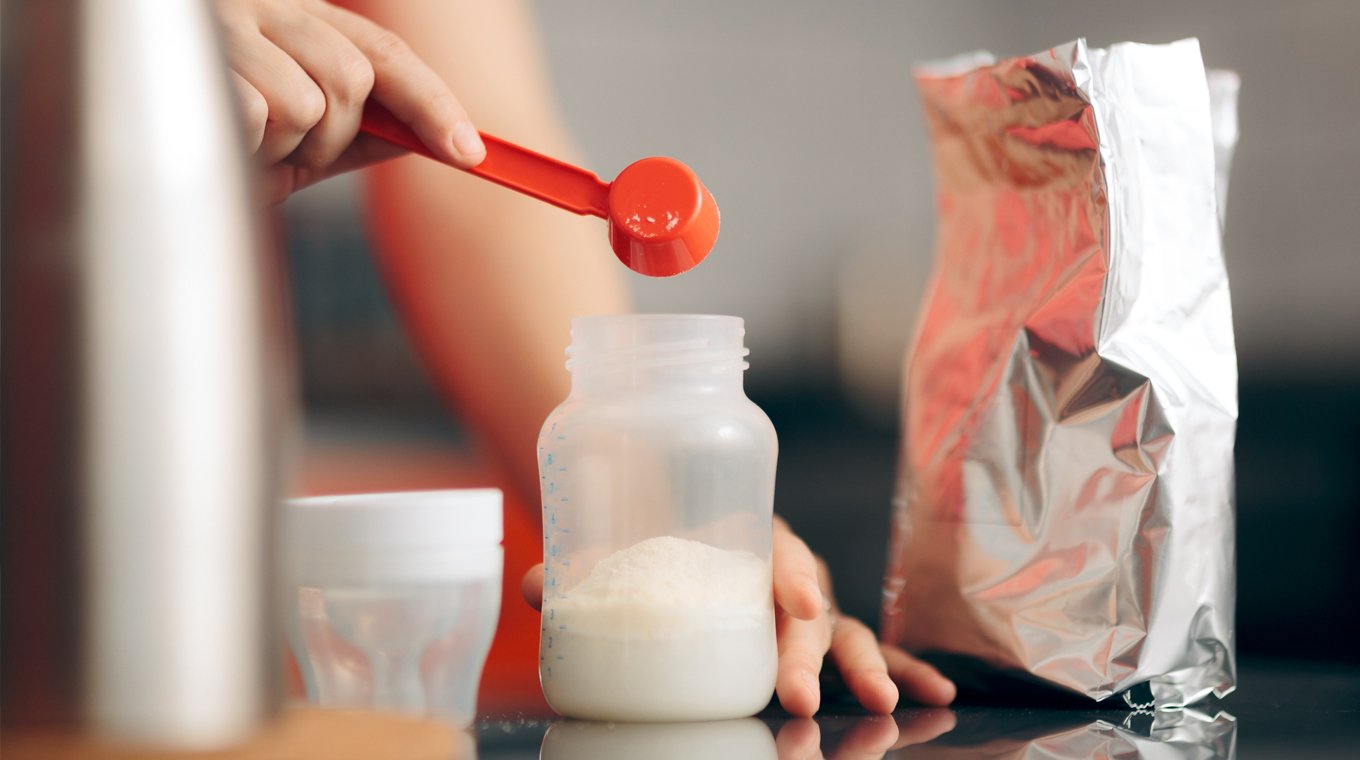
In this article
“Breast is best,” goes the old adage. With breastfeeding, all you need is a breast (maybe even a pump) to feed your baby with nature’s perfect food. “It’s easy to feel guilty about opting for formula when breastfeeding is presented as not only the best method but far, far superior to formula feeding,” Kristina Wright previously told Mom.com.
But with improvements in food science and technology, formula feeding is a close second to breastfeeding. So is baby formula safe? What is the best baby formula? And how’s that different from infant formulas? Or should it be, as my Latin teacher would say, formulae?
Is baby formula FDA-approved?

The short answer is, yes. Infant formula sold in the United States is regulated by the Food and Drug Administration. Hence, the FDA provides regulations for the nutrient compositions and their amounts in all infant formulas sold in the United States. The long answer is that infant formula does not need FDA approval before it’s marketed. Infant formula manufacturers need to merely inform the FDA before marketing their infant formula.
However, the FDA website is a good place to look for announcements regarding infant formula safety. Just recently, the FDA issued an alert for a number of infant formulas made in a Michigan facility that could be contaminated with Cronobacter and Salmonella bacteria. Four illnesses, including one death, may have been caused by the tainted formula.
Does that mean that infant formula is not safe? Not at all! Infant formula is generally safe, and generations of healthy adults have grown up on infant formula made to resemble human milk as much as possible. The key is to ensure that everything from the water to the bottles and nipples used to feed your baby is sterilized and clean.
What is the best infant formula?

With so many options to choose from, what is the best infant formula? Depending on your budget and your baby’s needs, choosing the best infant formula from the vast variety available out there can become less intimidating when you have a chat with your baby’s pediatrician.
For babies with identified food allergies or special health concerns such as low birth weight, pediatricians will recommend specific types of formula ranging from soy-based formulas to hypoallergenic formulas where proteins in the milk are fully hydrolysed (or broken down).
There’s also an option of organic infant formulas versus non-organic, too. It all comes down to the ingredients in baby formula that you favor. Some parents prefer formula made from a goat’s milk base, others prefer additional boosters like prebiotics and probiotics.
How to make infant formula

Making infant formula is as easy as following the instructions on the formula packaging. But who are we kidding? With a hungry baby howling for formula, it’s enough to frazzle any parent or caregiver! Since it’s vital to ensure that the directions on how to make the infant formula are followed to the letter, just remember the acronym DATE.
D — Dates
Dates are important — expiration dates, that is. On every can, box, and packet of formula is a stamped “used by” date from the manufacturer. This is the very first thing you need to check no matter how sleep-deprived you are! What I like to do is to tape a bright yellow Post-it on the can of formula and put the expiration date in red marker. That way, I won’t need to hunt for the expiration date in the middle of the night.
A — Accuracy
Be careful about measuring the powdered formula to water ratio. This means that scoops of powdered formula should be leveled flat, and that the amount of water used needs to be correctly poured into the bottle. The key is to avoid overdiluting or under-diluting formula. “If you mix formula incorrectly ― if you water it down or make it too concentrated ― it disturbs the electrolyte balance, which may lead to serious neurological consequences,” Lana Gangin, MD. told the Spectrum Health website.
T — Temperature
Do ensure that the temperature of the infant formula is not too hot to avoid scalding the baby. Shake the bottle of prepared formula to even out the temperature, and then do the tried-and-true test of sprinkling a little of the formula on the inside of your wrist for a quick temperature check. Remember that prepared infant formula needs to be stored in the refrigerator if it’s not drunk immediately.
E — Extra Clean
Making a bottle of formula is not the same as making a cup of coffee for yourself. Clean hands is the number one step that goes into making baby’s formula. With a vulnerable newborn, you don’t want to take any chances with germs, especially when bare hands are handling the nipple of the bottle, which will come into direct contact with the baby’s mouth. Sterilization of all bottle parts is also a good idea, as advised by the UK’s National Health Service.
What if there’s an infant formula shortage?
With the recent supply chain issues caused by Covid-19, there have been reports of a shortage of infant formula. You could check with your pediatrician’s office, which might have samples in limited supply to tide you over. Try reaching out to other parents in your community as well! Sometimes, cold calling different supermarkets near you and leaving an impassioned plea to give you a call back when products are replenished could be a good idea too.
Cheers, and ‘bottles’ up!



